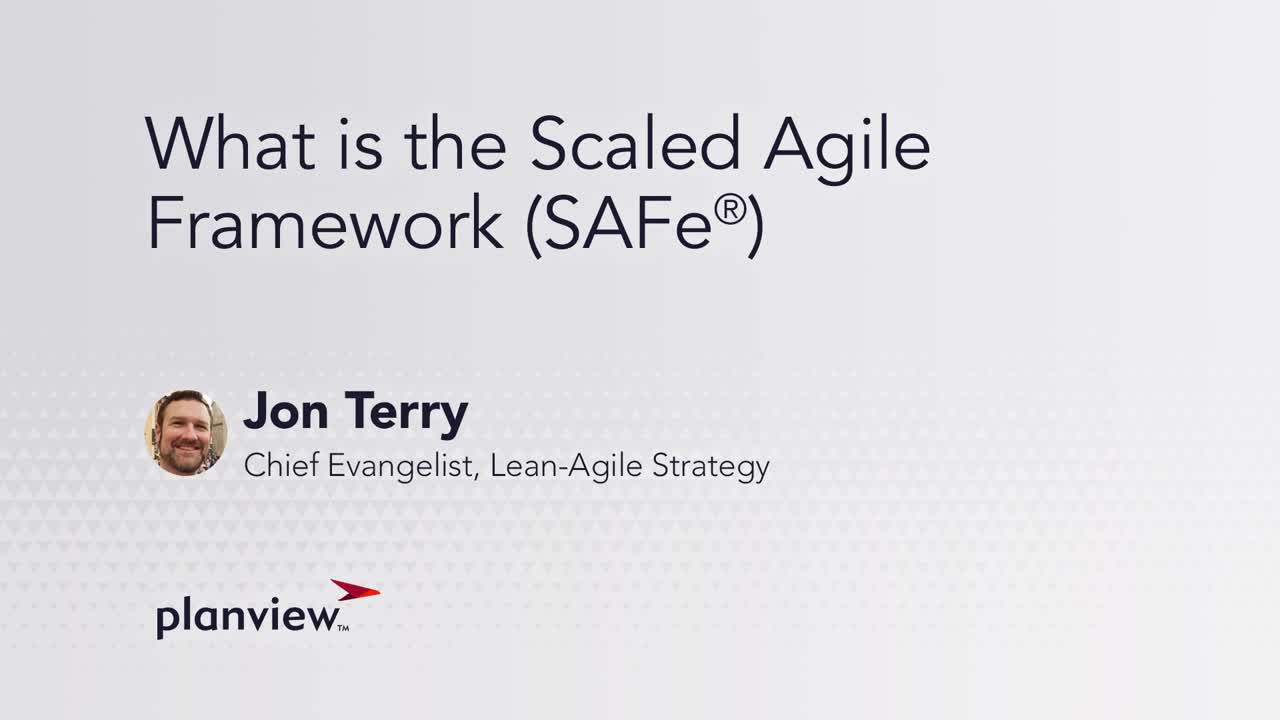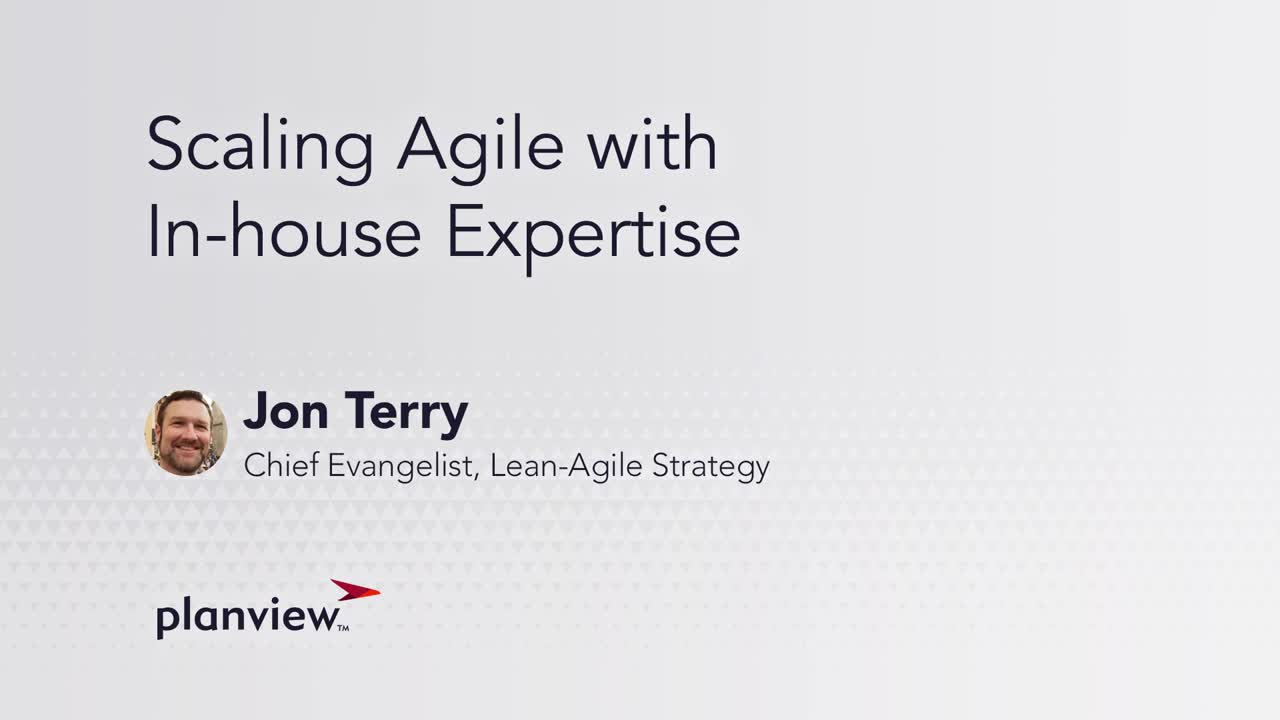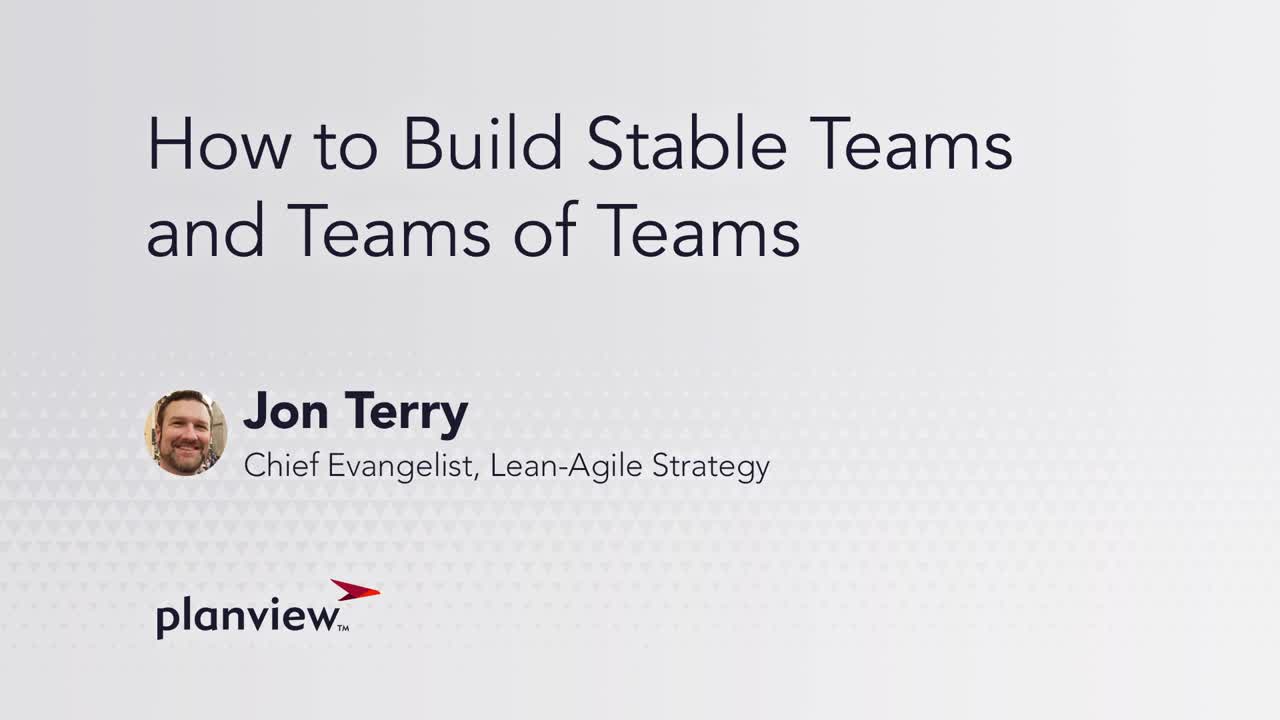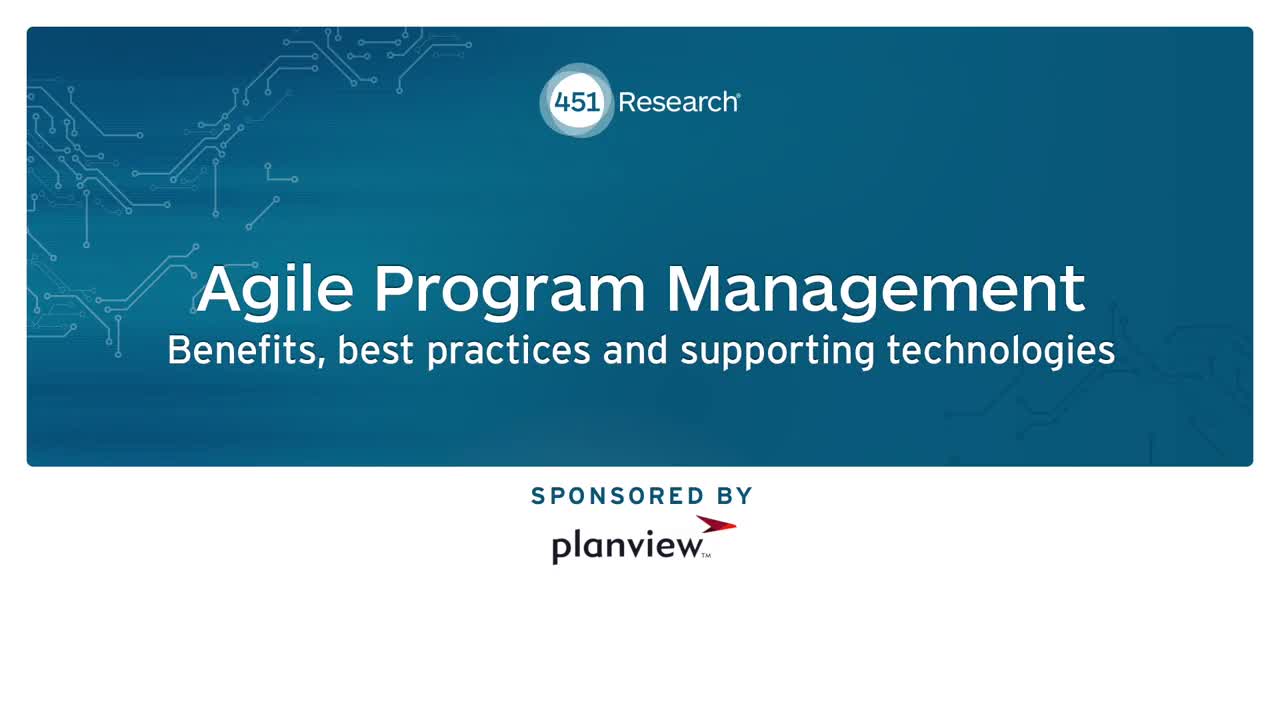Scaled Agile Framework: How Technology Enables Agility
The launch of SAFe 5.0, an updated version of the popular Scaled Agile Framework®, offers more guidance than ever surrounding business agility. If you’re looking to realize the benefits of Agile across your organization, you’re in the right place.

Learn what SAFe is and see how Planview supports it with boards and templates.
Across the globe, enterprises are hearing the call to boost business agility – and fast. Globalization, fast-moving markets, disruption, and the unprecedented pace of technological innovation are making the need for true, organization-wide agility more pressing than ever.
It’s likely that your IT organization has been practicing some version of Agile for years, helping to increase speed to market, reduce inefficiencies, and build a better-quality product.
But what began in software development is expanding to encompass the entire enterprise, changing how people work in every aspect of the business. We’re living in an interconnected, real-time world where every industry is a tech-enabled industry and every company is, at least in part, a software company.
Ultimately, to enable agility across the enterprise, organizations need to understand, adapt, and scale Agile beyond software development and IT to the rest of the business.
They must have the ability to evolve their portfolio management practices to boost business agility while balancing the delivery of work with the priorities of the business and demands of their customers.
In this guide, we’ll discuss the benefits of scaling Agile and provide tips and recommended practices for implementing the Scaled Agile Framework across your organization.
Why Scale Agile?

There are many reasons organizations begin looking for ways to scale Agile. Often, leaders see the benefits of Agile teams and want to scale them to tackle larger and more complex initiatives. Doing this requires much more coordination and planning to achieve similar and successful results at scale than in individual teams.

Organizations today are trying to scale Agile upward.
Here are a few other common reasons why organizations decide to scale Agile:
- Teams are growing in number, but work is not synchronized to a common goal.
- More extensive projects are looming, and teams are uncertain how to break down and manage the work across them.
- Agile processes, ceremonies, and team roles are not well-defined, making coordination between teams even more of a challenge.
- Quality and velocity suffer, since more teams are involved in the process of larger projects / initiative breakdowns. As a result, communication often fails, leaving many teams to lose faith in the processes as a whole.
Enterprises also begin looking for ways to scale Agile when they recognize the need for a better way to manage the complex, ever-evolving challenges they face. They need the ability to take large, unwieldy organizational initiatives and turn them into small, actionable bites of deliverable (and measurable) value that can be tracked and measured across the portfolio.

At the portfolio and program level, we are moving from plan vs actual to focusing on outcomes.
They need to spur innovation, deliver customer value faster, beat the competition, disrupt the market, and seize opportunities as quickly as they arise, not just in IT or software development, but in sales, customer support, marketing, finance, and HR, too. This is where the Scaled Agile Framework comes in.
Benefits of Scaling Agile
Scaling Agile is the progression of expanding the processes, practices, values, and benefits of Agile to meet the needs of the enterprise. If you’re reading this guide, it’s probably because you’re interested in realizing the benefits of scaling Agile in your team or organization.
Whether your goal is to increase innovation in your organization, enable more proactive solution development, or simply improve the efficiency of your planning/workflow management, Agile can help.
| Agile can enable: | Through: |
|---|---|
| More efficient planning and workflow management | Encouraging process visualization, workflow transparency, and shorter planning cycles |
| Streamlined funding and cost-accounting practices | Encouraging the adoption of more dynamic, Lean / Agile funding / cost-accounting and project management methods |
| Greater visibility across the organization | Promoting the use of visual management tools |
| Greater alignment of team activities with organizational strategy | Stimulating regular conversations around strategy with Program Increment Planning (PI Planning), and the use of Agile tools like Objectives and Key Results (OKRs) |
| Increase ability to respond to changes in the market | Shorter planning cycles and more adaptive governance and funding practices |
| Proactive, rather than reactive, solution development | An emphasis on customer collaboration and feedback |
| Better ability to predict and respond to market disruption | Continuously gathering customer feedback; operating in short feedback loops |
| Increased stability / sustainability of the organization | Development of long-lived, self-sustaining teams |
SAFe 5.0 Breakdown
So how exactly do you go about scaling Agile in your organization?
With the release of SAFe 5.0, we have Seven Core Competencies of the Lean Enterprise, an increase from the five competencies introduced in SAFe 4.6. This list of competencies has been expanded to help support business agility in the modern enterprise, with the addition of Organizational Agility and Continuous Learning.
Each of these competencies is a set of related knowledge, skills, and behaviors that together enable enterprises to achieve business agility. Taking steps to grow in each of these Core Competencies is a proven path toward organizational agility.
Here is a brief summary of each of the Seven Core Competencies and how they can help your business achieve business agility.
Core competencies of the Lean enterprise

Lean-Agile leadership
To scale Agile, Lean-Agile organizations need disciplined Lean-Agile leaders. Scaling Agile requires leaders to drive and sustain lasting change by empowering individuals and teams to reach their potential and maintain a focus on maximizing customer value.
The main difference between Agile teams and Lean-Agile leaders lies in their responsibilities: Teams take a hands-on approach to solving problems and delivering value, whereas leaders monitor the progress of those teams, helping to remove impediments and reallocate work when a block is identified.
An Agile leader is also responsible for keeping an open channel of communication between management and individual team members. Leadership and team members must have the ability to ask questions and receive answers, provide feedback, and brainstorm the best path forward. Agile leaders are expected to avoid micromanaging, instead focusing on the strategic direction of the organization and providing the value streams the space to complete the work.
Team and technical agility
In the Scaled Agile Framework, Team and Technical Agility describes the principles and practices that Agile teams use to efficiently create value-adding solutions for their customers.
The result of these practices includes increased productivity, better quality, faster time-to-market, and predictable delivery of value.
Notably, SAFe 5.0 dropped “Dev Team” when describing Agile teams. This is a nod to non-IT business teams, further showing framework’s expansion beyond IT / software development to include business agility.
Agile product delivery
Scaling Agile enables enterprises to embrace a customer-centric approach to defining, building, and releasing valuable products and services in a continuous flow, called Agile Product Delivery. Agile Product Delivery helps organizations create solutions that provide greater value to customers while lowering development costs and reducing risk.
Enterprise solution delivery
Modern enterprises rely on the world’s largest and most sophisticated software applications, networks, and cyber-physical systems. Enterprise Solution Delivery describes the process of applying Lean-Agile principles and practices to the specification, development, deployment, operation, and evolution of these software solutions.
Lean portfolio management
In scaling Agile, Lean Portfolio Management (LPM) aligns strategy and execution by applying Lean-Agile thinking to the way projects are planned, funded, and executed.
Lean Portfolio Management encourages organizations to think about breaking their planning and funding cycles down into smaller and more iterative chunks, much like how Agile work is broken down into smaller parts.
The key components of LPM involve changing how an organization manages:
- Strategy and investment funding
- Agile portfolio operations
- Lean governance
Organizational agility
Researchers at McKinsey & Company define the term “business agility” as “…the ability to quickly reconfigure strategy, structure, processes, people, and technology toward value-creating and value-protecting opportunities…” In scaling Agile, Organizational Agility describes how Agile teams optimize their business processes and practices to improve their ability to capitalize on new opportunities.
Continuous learning culture
Finally, Continuous Learning Culture in scaling Agile describes a set of values and practices that encourage individuals, and the enterprise as a whole, to continually increase knowledge, competence, performance, and innovation. Creating a Continuous Learning Culture involves:
- Prioritizing learning opportunities alongside regular work
- Encouraging learning as a primary goal
- Creating continued education opportunities for employees
- Creating systems that enable information sharing across the organization
How Technology Supports a Scaled Agile Framework
Regardless of the industry or industries in which you operate, your enterprise relies on a complex network of software – in the form of applications, networks, and infrastructure – that can either enable or prevent agility at scale.
One of the primary objectives of scaling Agile is to increase visibility across the enterprise. This not only helps align strategy and execution, it also works to empower everyone in the organization to identify opportunities to accelerate delivery, increase product quality, decrease cross-team dependencies, and ultimately create feedback loops for continuous improvement, creating a more sustainable system of value delivery.

But if your teams are working in disparate tools, it’s nearly impossible to reach the type of visibility required for scaling Agile. It’s imperative to look for ways to update, modify, merge, and rethink the use of legacy systems to create a technology system that supports Agile at scale.
As seen in the diagram, this can include:
- Rethinking how your organization completes strategic and annual planning
- Ensuring your organization has support to create, fund, and plan value stream priorities and break their work down into teams of teams with clear visibility into the work and return on investment
- Providing disparate teams with a way to visually manage, plan, and coordinate their work within a single system, reducing dependencies and accelerating team delivery

Teams of teams work together to achieve a common goal: Larger products or value streams for business intent.
However, there are ways to help bridge the communication gaps between the tools used across an organization, to provide visibility into the big picture without sacrificing the level of detail teams need to do their daily work. With the rise of Agile has come a growing number of enterprise Agile tools, designed to enable Lean and Agile delivery across complex organizations.
The specific criteria for evaluating Agile software solutions will vary depending on the size, maturity, and goals of your organization. It is important for organizations to select a tool that promotes a culture of continuous learning and improvement as well as one that helps your organization keep its strategic goals front and center.

Experience the best project management application for teams of all sizes
Sign up for your first project and invite your team for free
ProjectPlace Free Trial Full-functional 30-day trial • Planview projectplace-thick